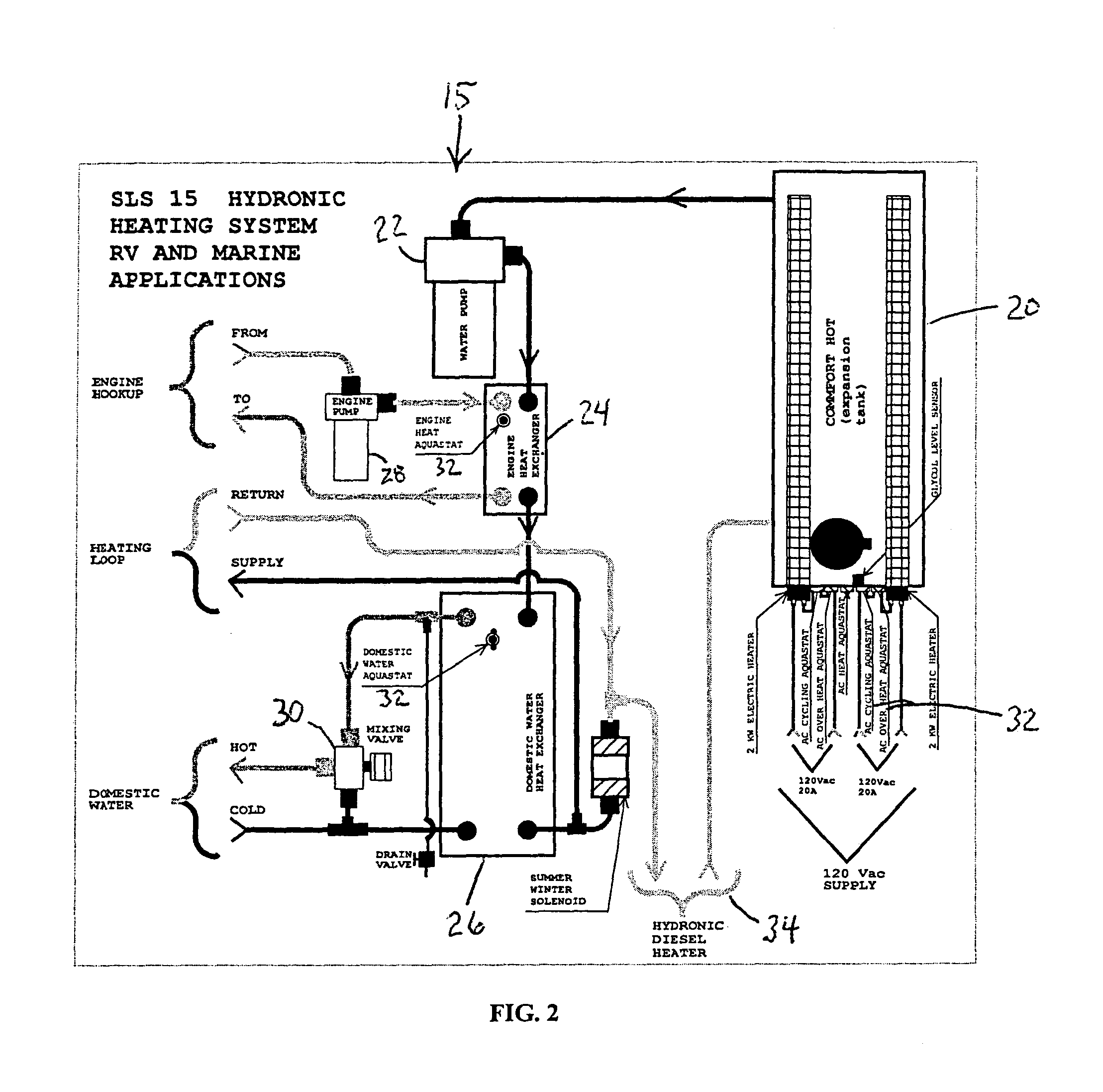Heating system
a technology of heating system and heat sink, which is applied in the field of heating system, can solve the problems of lack of continuous hot water, inability to use the system for a long time, and the first class of systems takes a relatively long period of time to heat water, etc. problem, to achieve the effect of improving safety, reducing the risk of fire, and improving the safety of us
- Summary
- Abstract
- Description
- Claims
- Application Information
AI Technical Summary
Benefits of technology
Problems solved by technology
Method used
Image
Examples
Embodiment Construction
[0031]Referring to FIG. 1, the system of the invention is shown at 10 and includes a control structure or board 12 (with undepicted, suitable, associated control circuitry) in bi-directional electrical / electronic communication with a user interface 14 (also referred to herein as a control panel which preferably takes the form of an LCD display that will be described further in connection with FIGS. 11-12); and in fluid / plumbing communication with stand-alone subsystem (SLS) 15. Control board 12 is also in bi-directional electrical / electronic communication with one or more heating sources 16, and with one or more heating zones 18.
[0032]As shown best in FIGS. 2-3, each of which depict components that are coupled via fluid / plumbing connection, subsystem 15 includes a heating-solution, storage-expansion tank 20 filled with a suitable heating solution (undepicted) such as a commercial grade glycol, a water pump 22, an engine heat exchanger 24, a domestic water heat exchanger 26, a fluid ...
PUM
 Login to View More
Login to View More Abstract
Description
Claims
Application Information
 Login to View More
Login to View More - R&D
- Intellectual Property
- Life Sciences
- Materials
- Tech Scout
- Unparalleled Data Quality
- Higher Quality Content
- 60% Fewer Hallucinations
Browse by: Latest US Patents, China's latest patents, Technical Efficacy Thesaurus, Application Domain, Technology Topic, Popular Technical Reports.
© 2025 PatSnap. All rights reserved.Legal|Privacy policy|Modern Slavery Act Transparency Statement|Sitemap|About US| Contact US: help@patsnap.com



